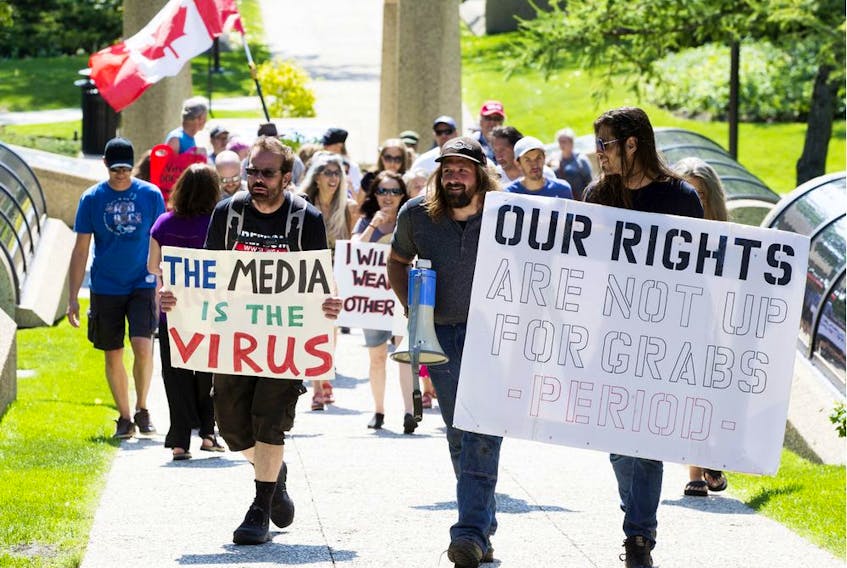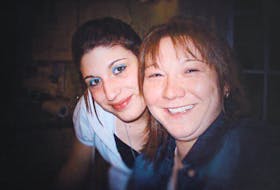Herd immunity is not fundamentally complicated.
Viruses don’t survive well outside hosts. People who are immune to viruses don’t transmit them well. If enough people are immune, a virus ceases to spread easily.
“We’re talking about a certain fraction of the population having developed immunity against a certain pathogen, either through exposure or through vaccination, such that if that pathogen appears, it won’t spread effectively through the population,” says Memorial University of Newfoundland (MUN) immunologist Michael Grant in St. John’s, NL.

Lately, there has been some discussion around whether we would be better served to use the first option – exposure – when dealing with COVID-19. The thinking goes that we would end most of the current measures and allow the virus to pass through our communities in order to achieve herd immunity.
The appeal is easy to understand. After months of uncertainty and lockdowns, it’s normal to just want this to be done.
“In the past, people my age, my generation, we probably acquired herd immunity against measles by actually getting the measles as a childhood disease and being infected and still being protected against measles today,” says Grant.
“Once a vaccine was developed, the next generation developed herd immunity via vaccination, same with polio, same with smallpox.”
But that’s a desperation move, the kind of damage reduction you do when you have no other choice.
Big numbers
Achieving herd immunity by exposure would not be a few weeks of sniffles before we all emerge on the other side with the virus defeated. Doing some back-of-the-envelope math, just over 134,000 Canadians have tested positive for the virus. Of those, just over 9,000 have died. That’s a nearly seven per cent mortality rate. Since we haven’t tested everyone in the country, let’s then assume that the real mortality rate is half that, three per cent. It sounds so small.
But imagine yourself in a room with 100 people. Someone enters the room and tells you that three people in that room will have to die for the rest of you to be safe. Maybe you fancy yourself a realist and think your odds of getting through are pretty good.
Atlantic Canada is a room with 2.3 million people in it. To let the virus “run its course” and achieve herd immunity, we would need at least 80 per cent of the people in the region to become infected. As a result, the math tells us 55,000 people could die.
Learn from past experiences

That’s only one scenario; others are possible. Infections spread in complicated ways and this virus is still very new. Public health experts, like MUN’s Dr. Catherine Donovan, need to balance known and unknown factors when approaching disease, which is one of the reasons why advice has evolved as the virus becomes better known.
“Decisions are made based on experience, in terms of public health, with other similar type situations. So, while we don’t have experience particularly with this virus, and we’re learning things every day, there is certainly a fair bit of experience with respiratory viruses that are transmitted in a similar way,” says Donovan.
“That would inform the decisions along with whatever current knowledge was available. And public health operates primarily on a precautionary principle, which means that you take what evidence you have, and you do what you think is going to be in the best interest of disease prevention and the public.”
One shot
The potential consequences for getting it wrong are why things have been moving cautiously in Atlantic Canada. When we put our chips forward to meet this coronavirus, we’re playing with human lives. Herd immunity is a gambit that Dr. Donovan isn’t willing to open with.
“If you're going to try to achieve herd immunity through natural exposure to an organism, you're putting a huge percentage of the population at risk,” she says.
“I know that many people will say, ‘OK, lots of people with COVID infection have mild disease or sometimes they’re asymptomatic.’ But there’s pretty good evidence that at least 20 per cent have very severe disease, and a good portion of them end up in hospital. This is part of the incentive for control measures, is you don’t want to overwhelm the healthcare system.”
Returning to the back of the envelope, let’s say 80 per cent of the population in Atlantic Canada did get the virus. If 20 per cent have severe disease, that’s 368,000 people. If only a fraction of those need to be hospitalized, hospitals will be overwhelmed.
Although COVID-19 can make it seem like the world is on pause, it is not. People continue to suffer from other diseases that require them to spend time in the ICU.
“That’s been the philosophy to the control of this disease. It’s not that we ever anticipated we were going to be able to stop it dead in its tracks, but that we were going to be able to keep a low level for a longer period of time so that the healthcare system could actually respond,” says Donovan.
“So, herd immunity from natural exposure just doesn’t make sense from a public health point of view. And I don’t know that in public health it’s ever been used in that way. It seems to be a phenomenon that’s risen primarily out of COVID-19, and frankly, it seems to be more of a political issue than it is a public health issue.”
History: Teacher?

To return to the example of measles, or the 1918 flu pandemic, we risk taking the wrong lessons from history when we only consider the survivors. We think of these events in black and white, those who live and those who die. We think of them in terms of a world saved versus a world ended.
But there is an infinity of grey between those two possibilities. COVID-19, left unchecked, would likely not “end the world”, but that doesn’t mean the consequences of that unchecked spread aren’t worth avoiding if possible.
“When they talk about things like measles, yeah, there was a lot of natural immunity. And there were a lot of kids that got sick. And there were a number of kids that had long-term effects. And a number of children died from measles,” says Donovan.
“Nobody would say now, let’s just forget about measles vaccination and let all the kids get measles again. It doesn’t make any sense. It happened with the flu in 1918, because there were not interventions, and the healthcare system was overwhelmed. So yes, people developed herd immunity at that time, but it was the ones who survived that are thinking it’s a great thing, it’s not the ones who died.”
The measures we’ve taken in 2020 have been in the hope that we can do better than we did with the 1918 flu pandemic, or better than we did pre-vaccine with measles.
“I don’t think that there’s really that much to herd immunity, other than how it’s acquired and the impact that it has,” says Grant. “This is going to be acquired, if at all, is going to be acquired through a vaccine.”
Magic bullets

According to Dr. Donovan, for most viruses, around 80 to 90 per cent of the population would need to be immune to achieve herd immunity as it is generally understood. A successful vaccine generates an immune response to a disease and protects individuals who receive it. By breaking chains of transmission, vaccines also protect people who could not survive the disease or who, for a variety of reasons, can’t be vaccinated.
We’re all waiting for that 90 to 95 per cent magic bullet, like the measles vaccine that was introduced to Canada in 1963. We should be prepared for less than that, according to Grant, but that doesn’t mean we should scoff at a less-effective treatment for a virus that currently has none.
“Fifty to 60 per cent, I don’t want to sound pessimistic, but I think that's probably optimistic. And it would be enough to have a huge effect,” says Grant.
Even a much less effective vaccine, even at 30 per cent efficacy, could help save lives even if it doesn’t immediately return us to our old way of life.
“I think 30 per cent is going to make a difference if we continue to behave more or less the way that we’re behaving now, wearing masks and practicing social distancing,” says Grant.
“A 30 per cent effective vaccine’s not going to make a huge difference in one of these superclusters, where a thousand people go into a church and sing or go into a funeral home and hug each other and shake hands. A 30 per cent vaccine wouldn’t stop public health from advising us to keep behaving the way we are now. But it would help.”
In the absence of a magic bullet, Dr. Donovan stresses that the measures public health authorities have put in place are partly about getting used to behaviours that limit risk while (hopefully) allowing us to return to something like normal life instead of back into full-blown lockdown.
“If you wear a mask, you're protecting someone else. If you keep your distance, you're adding another level of protection. If you don’t go to a crowded place, you're adding another level of protection. If you get vaccinated, you're adding another level of protection. Nothing is going to be a hundred percent. People are looking for guarantees but there aren’t any guarantees. But everything you do provides some protection.”









